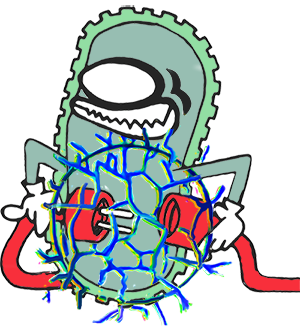Team:TU Delft-Leiden/Modeling/interactions
From 2014.igem.org

-

-

-
Project
-
General Overview
A summarizing description of project ELECTRACE
-
Life Science
Scientific foundations and construction and characterization of BioBricks
-
Microfluidics
Design and use of microfluidics
-
Gadget
Working towards a portable biosensor
-
Parts
New BioBricks submitted to the Registry
-
Safety
Handling of GMOs and relevant chemicals
-
Brainstorming
Find out how our iGEM team picked the topic
-
Notebook
All details on the labwork
-
-
Modeling
-
Modeling Overview
Discussion of what we did and our results
-
Curli Module
Modeling of the conductive curli module
-
EET Module
Modeling of the Extracellular Electron Transport module
-
Landmine Module
Modeling of the landmine detection module
-
Interaction with Life Science and Microfluidics
Discussion of the interactions we had with the Life Science and Microfluidics departments of our team
-
Modeling Methods
Discussion of several methods we used in the modeling of the modules
-
Code Repository
Here you can download the Matlab scripts we made
-
-
Policy & Practice
-
Overview
-
ELECTRACE
Application, potential, advantages and issues
-
Case study: Landmines
ELECTRACE applied to the detection of landmines
-
Interviews with stakeholders
Opinions about ELECTRACE and synthetic biology
-
Outlook
Synbio issues and possible solutions
-
Outreach
Interaction with the general public
-
- Achievements
-
Team & Supporters
-
Meet our team
Students and advisors
-
Attributions
Individual contributions
-
Acknowledgments
Individuals providing help & advice
-
Sponsors
Faculties, departments, companies etc. who funded our work
-
Collaborations
Support of other iGEM teams
-
Media
Public attention (newspapers, journals, interviews) of our project
-
Interaction with Life Science and Microfluidics
As modeling of the modules can only provide in silico results, it is very important to verify these results in an experimental setting. We had great interactions with the Life Science and Microfluidics departments of our team. For each of the three different modules, we made a summary about how we worked together on the module:
 "
"





